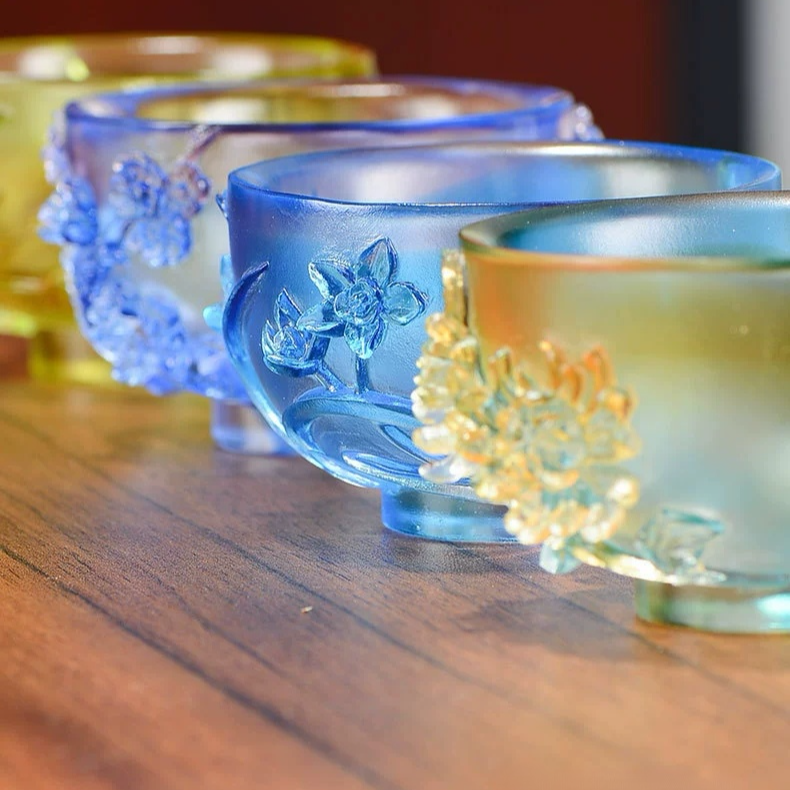Discover expert tips on how to clean, maintain, and preserve your precious handmade art glass lamps and sculptures. Our ultimate guide ensures your investment remains brilliant for years to come.
Investing in a piece of handmade art glass—be it an elegant lamp that casts a warm, inviting glow or a intricate sculpture that captures the light—is more than a purchase; it’s the beginning of a legacy. These pieces are born from fire, skill, and artistic vision, making them treasures worthy of meticulous care. Unlike mass-produced glassware, art glass demands specific attention to preserve its brilliance, clarity, and value.
This ultimate guide provides you with professional, step-by-step instructions on how to protect and maintain your collection, ensuring it continues to tell its story for generations.
Understanding the Value: Why Art Glass Deserves Special Care
Handmade art glass is a testament to human craftsmanship. Techniques like glassblowing, kiln-casting, and lampworking create unique pieces with subtle variations, tiny air bubbles, and complex color patterns that are impossible to replicate. This very uniqueness also means they can be more sensitive to improper handling, harsh chemicals, and sudden temperature changes.
Proper care isn’t just about cleanliness; it’s about honoring the artist’s labor and preserving the integrity and financial value of your artwork.
The Golden Rules of Art Glass Maintenance
Before we dive into specifics, remember these three non-negotiable rules:
-
Gentleness is Key: Always handle with clean, dry hands. Avoid gripping delicate parts like thin stems or sharp edges.
-
Avoid Extreme Temperatures: Never subject your art glass to sudden thermal shock (e.g., placing a cold piece under hot water). This can cause stress and lead to cracking.
-
The “Less is More” Philosophy: When in doubt, use the mildest cleaning method possible. Harsh chemicals are the enemy of art glass.
Chapter 1: The Daily & Weekly Dusting Ritual
Regular dusting is the single most effective way to maintain your art glass’s shine and avoid the need for aggressive cleaning later.
-
Tools You’ll Need: A soft, clean microfiber cloth, a soft-bristled brush (like a makeup or artist’s brush), or a can of compressed air.
-
The Method:
-
Ensure the piece is on a stable, secure surface.
-
For light dust, gently wipe the surface with a dry microfiber cloth. Its electrostatic properties will attract dust without scratching.
-
For intricate carvings, hard-to-reach details, and textured surfaces, use a soft-bristled brush or a short burst of compressed air to dislodge dust gently.
-
-
What to Avoid: Feather dusters can snag on edges and often just redistribute dust. Paper towels can be abrasive and may leave lint behind.
Chapter 2: The Deep Cleaning Process: A Step-by-Step Guide
Perform a deeper clean only when necessary, perhaps every few months or when you notice fingerprints or smudges.
-
Tools You’ll Need: Lukewarm water, a mild pH-neutral dish soap (no dyes or harsh additives), a plastic basin or bowl lined with a soft towel, another soft microfiber cloth, and cotton swabs.
-
The Method:
-
Prepare a Safe Space: Line the bottom of a plastic basin or your sink with a soft towel. This cushions the glass and prevents accidental chips.
-
Create a Mild Solution: Add a few drops of the mild soap to a bowl of lukewarm water.
-
Damp Wipe, Don’t Soak: Dip a corner of your microfiber cloth into the soapy solution, wring it out completely until it’s only damp—not dripping. Gently wipe the surface of the glass.
-
Rinse with Care: Dampen a second cloth with clean, lukewarm water (no soap), wring it out thoroughly, and wipe the surface to remove any soap residue.
-
Dry Immediately and Thoroughly: Use a third clean, dry, and soft microfiber cloth to gently and meticulously dry the entire piece. This prevents water spots from forming.
-
Detail Work: For tiny crevices, use a cotton swab lightly dampened with water (well-wrung) to carefully clean the area, followed by a dry swab.
-
Chapter 3: Handling and Display: Prevention is Better Than Cure
How and where you place your art glass is crucial for its longevity.
-
Stable Surfaces: Display your pieces on sturdy, level furniture away from high-traffic areas where they could be bumped or knocked over.
-
Sunlight Awareness: Prolonged direct sunlight can cause certain glass colors to fade over time. Display your treasures in areas with indirect light to preserve their vibrant hues.
-
Vibration: Keep pieces away from speakers, subwoofers, or frequently slammed doors, as constant vibration can weaken the structure over time.
-
The Base Matters: If your sculpture has a metal or wooden base, ensure it is clean and stable. Check for any felt pads that might need replacing to prevent scratching your furniture.
Chapter 4: What Absolutely NOT to Do
This list is critical. Avoid these common mistakes at all costs:
-
NO Abrasive Cleaners: Scouring powders, harsh chemicals, and anything abrasive will permanently scratch and cloud the surface of your glass.
-
NO Harsh Chemicals: Avoid ammonia-based cleaners (like Windex), bleach, acetone, or any acidic cleaners (like vinegar). They can etch the glass, leaving a permanent dull film.
-
NO Dishwashers: The extreme heat, harsh detergents, and potential for knocking into other items make a dishwasher a death sentence for art glass.
-
NO Sudden Temperature Changes: Never pour hot liquid into a cold glass piece or clean it with hot water after it’s been in a cold room.
Chapter 5: Professional Care and Repair
For valuable antique pieces, significant damage, or deep stains you cannot identify, always consult a professional glass conservator. Attempting a repair yourself with commercial adhesives can drastically decrease the value and often leads to further damage. A professional can assess the piece and use appropriate, reversible conservation techniques.
Conclusion: An Heirloom in the Making
Your handmade art glass collection is a reflection of beauty, history, and personal taste. By following this guide, you are not just cleaning an object; you are acting as the curator of a future heirloom. The gentle care you provide today guarantees that the captivating dance of light through glass will continue to enchant your family and guests for many years to come.
Ready to find your next masterpiece? Explore our curated collection of handcrafted art glass lamps and sculptures, each destined to become a cherished part of your home.













